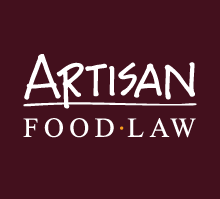All change for the fruit juices and nectars regulations
The need to implement Directive 2012/12/EU and the desire to make life simpler for fruit drink producers were the driving forces behind The Fruit Juices and Fruit Nectars (England) Regulations 2013. The 2013 Regulations give effect to the Directive and consolidate, with the removal of minor ‘gold plating’ and as a part of the Red Tape Challenge, all the earlier regulations into a single set which came into force on 20 November 2013.
The Department for Environment, Food and Rural Affairs (Defra) consulted on the proposed changes earlier this year and publication of the response coincided with the implementation of the 2013 Regulations. The changes were broadly welcomed by the five bodies which responded to the consultation, two trade associations and three local authority trading standards bodies, and have provoked little or no critical response.
Directive 2001/112/EC, as amended by Directive 2009/106/EC and now Directive 2012/12/EU, has been updated as follows:
1. Processing methods
-
A change from mandatory to the optional restoration of aromas to fruit juice and fruit juice from concentrate.
-
Permits a new category called ‘water extracted fruit juice’, juice produced by the diffusion of water with pulpy whole fruit or dehydrated whole fruit.
-
Permits freezing fruit as an approved method of preservation.
2. Sugar prohibition
-
Prohibits the addition of sugar to fruit juices.
-
Prevents ‘no added sugar’ claims on fruit juices.
-
The option to use text to educate consumers for a time limited period that in future fruit juice will no longer contain added sugar.
-
Prevents the use of ‘no added sugar claims’ on nectars containing added sweeteners.
-
The lowering of Brix values for blackcurrant, guava, mango and passion fruit.
3. Labelling
-
The requirement for the product name to reflect the fruits represented in the ingredients list in descending order of quantity in the product.
-
The inclusion of tomatoes in the list of fruits used in fruit juice production.
-
Amended definition of fruit juice to clarify that the use of fruit purees is acceptable in juice production and can be regarded as ‘juices’.
These changes will also bring fruit juice standards in line with the international Codex fruit juice standard.
In line with other recent changes the enforcement regime steps back from criminal sanctions as a first resort in favour of a more proportionate and targeted regime using improvement notices and a system of appeals as provided for under sections 10, 37 and 39 of the Food Safety Act 1990, but in a modified form. Criminal sanctions, however, remain available where there is a failure to comply with an improvement notice. Any person found guilty of an offence is liable, on summary conviction, to a fine not exceeding level 5 on the standard scale.
The 2013 Regulations will be reviewed in 2018. They will be compared with how Directive 2001/112/EC has been implemented in other EU countries and an assessment of their overall effectiveness in England will be made.
A major update of the Artisan Food Law Library document on Non-alcoholic Drink: Fruit Juices and Nectars was completed on 31 January 2014.
Photo credit: © By derivative work: JD {æ} Apple_juice_with_3apples.jpg: Flunse (Apple_juice_with_3apples.jpg) [CC-BY-SA-2.0-de (http://creativecommons.org/licenses/by-sa/2.0/de/deed.en), GFDL (http://www.gnu.org/copyleft/fdl.html) or CC-BY-SA-3.0 (http://creativecommons.org/licenses/by-sa/3.0/)], via Wikimedia Commons





